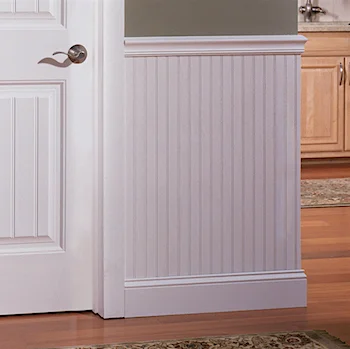Bring back the warmth and beauty of fine wood to your home with wainscot paneling. There is nothing like the warmth and beauty that real wood wainscot bring to a room. In fine homes throughout history, wood paneling can be found in living rooms, dining rooms, libraries, family rooms, bedrooms, entry foyers, and along staircases. Today, they are even being used in kitchens and bathrooms.
The practice of lining interior walls with wooden panels began in the late Middle Ages and became very popular during the Renaissance. It was an attempt to make living areas more comfortable. Stone walls are cold, and they can pull dampness from the ground up into the building. Covering walls with thick wood made them warmer and drier.
Early wainscoting was tall, often covering the lower three-quarters of the wall. Oak was the wood most frequently used for the purpose. For several centuries in England, "wainscot oak" referred to the beautiful quarter-sawn oak surfaces that were typical of wainscoting.
Raised Panel wainscoting
A raised panel wainscot, popular in England throughout the Stuart and Georgian periods, was the earliest style to be developed. Each panel is pushed out into the room slightly, so that it is in front of the styles and rails. The beveled edge created by molding is very noticeable. Raised panel wainscoting is the most formal wainscot style even today.
flat panel wainscoting
Recessed panel, or flat panel, wainscot was developed during the 19th century in North America. The panels are placed a little deeper than the rails and styles, giving a recessed appearance. No molding is used, so the panel edges are very obvious. These panels were used in Mission-style buildings and were often placed in Craftsman houses.
beadboard wainscoting
During the Victorian period, wainscot made of beadboard was very popular, especially for informal areas or beach houses. It was usually installed with the beaded lines running vertically. The rails and styles were quite narrow and inconspicuous. Today, beadboard wainscoting is often used to create a casual or country mood.


